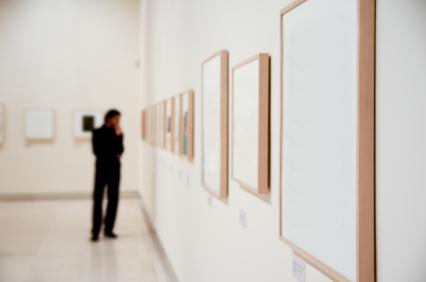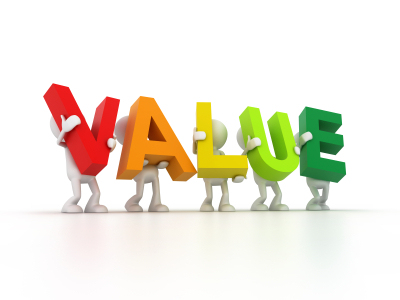Label: sales
Friday 06th February 2015Picasso Sell Off

The granddaughter of Pablo Picasso, famous master of Cubism, has announced that she plans to sell some of the massive collection she inherited “one by one, based on need”, in order to finance her charitable work. Her collection of works by Picasso is estimated at over 10,000 individual pieces, ensuring that she probably has enough material to keep any sort of charity work going that she cares to undertake, with ease. Media reports are rife with speculation only, however, as Marina Picasso has announced that she plans to sell the work privately, and hasn't said much more than that.
In an interview with the New York Times, Marina Picasso said, "“It’s better for me to sell my works and preserve the money to redistribute to humanitarian causes. I have paintings, of course, that I can use to support these projects.”
This, naturally, sent the world of the art auctioneer into a tizzy, amid fears that a large sell off of Picasso's work could depress the value of every other Picasso on the market. This was further compounded by the fact that nobody knows exactly how many pieces she plans to sell from her collection, which has approximately 300 paintings in addition to a much larger number of etchings, sketches, and ceramic pieces.
Rumours are that she plans to sell seven major paintings, which could fetch up to £200 million, although this is not confirmed. All she has said done is confirm that she plans to sell some, and to dispel rumours tht she was also planning to sell Pablo Picasso's villa, La Californie, in the south of France where she currently lives.
Speaking to The Guardian, Melanie Gerlis of The Art Newspaper said, “She obviously is great provenance and she must know a lot of people. The reality is that there are a lot of ways to sell art. We are used to auction versus dealer but now you have auctions acting as dealers, you have agents, you have advisers, people are even selling things over Instagram. It is a changing landscape. If she was selling 300 paintings all at the same time then yes that may depress the market. It doesn’t sound to me like it is going to be a dramatic fire sale.”
Hopefully, once everyone has gotten over the shock of the idea that she's selling things privately instead of using a "respectable" auction house (although it seems like the media are almost creating that frenzy themselves), we can relax in knowing that she's putting the money from the sales to a good cause.
Posted on February 06th 2015 on 05:21pm
0 Comments
Friday 19th December 2014All Time Auction Records

Just when you think the art market can't get even more incredibly rich, it does. Despite many predictions that the current auction sale bubble is going to burst, sending all those multimillionaires and billionaires into tears as the value of their precious art collections crumble, the market just keeps getting stronger and stronger. Of course, that's always how things look before a bubble burst, but after the recent contemporary art auction held by Christie's, it's clearly not quite ready to burst just yet.
Only a few days previously, Sotheby's, the primary competitor in auctioneering to Christie's, set a respectable mark at just shy of $344 million USD for contemporary art, including $36 million for a new Jasper Johns record sale price for Flag (1983). Christie's, however, completely blew that figure out of the water with a truly staggering $852.9 million USD mark, spaced across 75 lots.
Figures like these make the working artists among us cringe and salivate at the same time, wishing our pieces would sell for such ridiculously high sums, and bemoaning the fact that the artists never see a penny of these incredible amounts. They do, however, also point out the fact that the art auction market is almost wildly divergent from the actual art world itself, the one where creation and appreciation of art is important for an emotional reason rather than a financial one.
The dealers and speculators who buy and sell works at these prices aren't really buying and selling art in the way that most of us mere mortals think about it, they're effectively trading stock. They don't buy pieces because they appreciate their beauty, or because they like the artist, or because they like the way it makes them feel. They don't even purchase them because they're fashionable - they purchase them because they expect to be able to turn them around in a few years and sell them for even more money. It's not about the art, it's about the perception of value.
So next time you see a multi-million dollar price tag, don't despair - remember that they might as well be cowrie shells, pieces of petrified elephant feces, or anything else that everyone simply agrees has value. It doesn't necessarily make them any good.
Posted on December 19th 2014 on 06:42pm
0 Comments
Monday 03rd March 2014Near-Record Breaking Art Auction Sales

The art world has always been the home of the truly eye-popping auction piece. Whether it's a 700 year old Ming Dynasty vase selling for millions of dollars or a Van Gogh selling for tens of millions, these incredibly high prices have been commonplace for quite some time. That is, of course, until the global financial collapse in 2008 that depressed economic markets around the world in virtually every sector. Typically, because those who are buying these fantastically valuable items are inherently the extremely wealthy, the art auction market is typically a bit more robust when it comes to financial downtowns, but in 2008 auction prices and auction volumes took a serious hit.
In 2007, just one year before the bottom fell out of the financial sector and everyone took a tumble, the global art auction market had reached its pinnacle, with a staggering 48 billion euros in sales and auctions taking place. The market bottomed out in 2009, when it reached a low point of 28.6 billion euros, an incredible. Some analysts point out that this was actually nothing more than a return to the numbers posted in the early 2000s, and that the boom years of 2006 and 2007 were nothing more than an 'art bubble', something akin to a real estate bubble.
However, the last 3 years seem to have proven those pundits wrong, as the market rebounded in 2010 and has been on the rise since. Naturally, there are variations in sales within individual nations around the world, but the United States showed a whopping 25% increase in sales, snagging an equally impressive 38% of the sales around the world, up 5% since 2012. New York, unsurprisingly, is the centre of these sales, but buyers fly in from around the world to make purchases there. American artists are also at the forefront of the sales, with record sale valuations being posted for works by famous American pop-art pioneers Andy Warhol and Roy Lichtenstein in the years since the bubble had seemed to burst, back in 2009.
It will be interesting to see the possible effects on the stylistic choices that are made by artists hoping to capitalize on these trends, in an effort to predict the next big popular art movement. Now that the old post-modern refrain 'everything's been done before' has proven false by its very nature, a whole new world of artistic possibilities are being explored.
Posted on March 03rd 2014 on 05:51pm
0 Comments
Thursday 27th February 2014Shipping Your Masterpieces to Your Buyer

If you've ever tried to ship something delicate before, it's almost a guarantee that you've had a bad experience. It's a frustrating but almost inescapable law of modern logistics that the more fragile something is, the greater its potential for having a warehouse worker drive a forklift through the middle of it or accidentally drop it down a flight of stairs. So once you've made your sale, said goodbye to your beloved masterpiece, and actually come down to the 'How' question of shipping, be sure to take all possible precautions. (Note: we're sorry, but we can't be held responsible if you follow these methods and something bad happens to your work - these are intended as general guidelines only.)
If you're working a digital medium, and selling prints to your buyers, your life is considerably easier. Most shipping stores and post offices sell shipping tubes for just such eventualities, and they tend to be made out of extremely durable cardboard. Ensure that you don't skimp out on expensive shipping materials, and buy a tube with adequate structural integrity. Depending on the type of paper you've chosen to print on, you should also be wary of buying a tube with sufficient diameter to prevent any print coatings on the paper from being damaged while rolled, as the coatings may compress and crack when unrolled if they are rolled too tightly. Even if you make all the right choices, accidents can happen - but at least in that case, you're only out a single print of your work, and the original hasn't been lost forever.
When you're shipping something like a framed work, a painting, or anything on stretched canvas, for example, shipping tubes are clearly not an option. However, with a bit of creative thinking and a trip to your local hardware and/or shipping store, you can quickly construct something that will prevent even the most delicate piece from being damaged by the most careless employee. First, wrap your piece in some type of thin plastic to protect the surface. Follow this up with a couple of layers of bubble wrap, paying close attention to the corners. Next, take some thick corrugated cardboard and cut a custom-sized set of panels, one for each side of your piece. Ensure that there are several inches of extra cardboard around each edge. Take these two pieces and carefully fold the edges over to create an internal protective layer. Wrap this whole thing in bubble wrap once again (you'll want the kind with large bubbles, not the smaller types use in electronics packaging), and place it in a telescoping shipping box, which any shipping store can provide. Voila! Don't forget to buy some shipping insurance when you send the package, just in case the worst should happen - the world is governed by Murphy's Law, of course.
If you don't want to deal with the hassle of all of this, it's quite possible that you'll be able to find a shipping company near you who specializes in transportation of artworks and other extremely valuable and fragile one-of-a-kind items. They're definitely more expensive, but when you're shipping a piece worth thousands of dollars, it's better not to mess around and hope for the best. Even the best insurance in the world can't bring your piece back from destruction. Remember - this is only a guide. If you're not certain you can do it yourself, hire a professional shipper.
Posted on February 27th 2014 on 08:06pm
0 Comments
Thursday 30th January 2014The Changing Art World

It's no surprise that the art world changes regularly - innovation, re-examination and remixing are three of the main driving forces behind artistic vision, and have been there in some form or other since the very beginning of recorded history. It should come as no surprise, then, that the way both artists and viewers interact with art is also undergoing a change. To any of you who already use a Gallereo page to sell your work, whether in conjunction with offline galleries or not, this should come as no surprise. After all, you're already adopting one of the major changes that have shaken up the traditional gallery model. Online art sales are booming, and while many buyers don't want to buy artwork without seeing it 'in the flesh', this attitude is also changing.
Online galleries are the only shakeup going on at the moment, as the growing popularity of the art fair has begun to change how galleries operate. Instead of relying on general foot traffic and industry parties to generate buzz, many gallery owners - and independent artists - are finding great success from the consolidating opportunities offered by art fairs. In the same way that online art shopping allows potential buyers to browse a virtually unlimited selection of work, art fairs are offering the chance to browse a massive selection while still actually being able to inspect the pieces firsthand before purchase. For gallery owners, the potentials are just as tantalising, with some gallery owners able to earn as much as they normally would in an entire year from a single successful art fair.
Now, you're not going to stumble across a Van Gogh or a Picasso, even at as prestigious a fair as the recently completed London Art Fair, but as the number of works by the most well-known world famous painters are increasingly becoming unavailable as they get picked up by private collectors and museums unlikely to sell, the demand for contemporary work is growing by leaps and bounds. It doesn't hurt that many different cities around the world are beginning to catch on to the trend, making local contemporary work available to a much wider audience than galleries have been able to reach traditionally. Artists who take the time to combine an online presence with appearances at local art fairs are likely to dramatically increase both their sales and general exposure within the art world.
Posted on January 30th 2014 on 03:08pm
0 Comments
Tuesday 14th January 2014The Global Art Market Today

Ever since the global economic meltdown in 2008, the art market has been in some relatively dire straits. Many famous works that were put up for auction by famous auction houses remained unsold, or sold for amounts that were barely eye-catching at the time. Fortunately, the rise in consumer confidence that many nations around the world have begun to experience is also making its way into the global art market, which has once again begun to thrive.
Many speculate that the driving force behind the initial resurgence in the market is a sudden increase in demand from newly affluent buyers in the Asian market, especially China, which may account for the recent perception that the most expensive works being sold today are predominantly red, as the colour red is associated with luck and good fortune in many Asian cultures. Several major crimson-tinted pieces have gone up for auction recently, including a portrait of Chairman Mao by pop-art icon Andy Warhol, valued at up to 7 million pounds, and even more eye-poppingly, a beautiful abstract piece titled 'Wall' by Gerhard Richter, which is estimated to sell at a minimum of 15 million pounds. This is truly remarkable, as Sotheby's, the auction house responsible for the sale of 'Wall', speculates that the auction may exceed expectations and sell for over 23 million pounds, breaking the record for highest auction price commanded by a work from a living painter. Not something to sneeze at, surely.
The latest estimates from Sotheby's pegs the Chinese taste for art at nearly a quarter of the $58 billion USD global art market, but buyers from Latin America, Russia and the Middle East are also paying staggering sums of money at auction houses around the world, with the current favourites being Picasso, Matisse, as well as more contemporary artists. Both Sotheby's and Christie's are also looking to expand their operations in India, with several new sales upcoming and already passed in recent months.
While most of us won't be selling works valued anywhere near the staggering amounts listed above - at least, maybe not in our lifetimes - if you're looking for some inspiration about how to guide your next piece, creating something of the crimson persuasion might help give you an edge. If nothing else, warm colours might help you creatively offset the harsh winter that's gripping much of the northern hemisphere this year.
Posted on January 14th 2014 on 03:00am
0 Comments
Thursday 12th December 2013Using the Story Behind Your Art To Make Sales

For many artists, the most difficult thing they ever have to do is write about their own work. Even for those lucky few who are gifted with the talent to write, it can be a struggle to discuss their pieces. Somewhat irritatingly, though, writing about your art is one of the most certain ways to help boost your sales volume. Not only does it give your piece a huge SEO boost - not to mention a huge SEO boost for your Gallereo page as a whole - but it helps your readers and potential buyers connect with you on a basic human level, understanding who you are and how you got here.
Backstory is one of the many things that make art unique - and, therefore, more valuable. If you were considering two pieces to purchase, both of them executed with equally dazzling skill in similar styles and at similar price points, and you knew the story behind one of them and nothing about how the other was produced, which would you end up purchasing? Nine times out of ten, I'll bet you would buy the one with the story behind it. While there's something to be said for mystery, creative lineage has far more value to it.
So at this point, you may be thinking to yourself, 'But my pieces don't have good stories behind them!' - which, if you're honest, probably isn't true. This is one point where keeping a decently organized process book can really help you to remember the development of each of your pieces. Odds are, there is a pretty decent story behind each one, if only you can remember it. If, somehow, you feel there really isn't a story worth telling for each piece, then take a good hard look at yourself and your art career instead. People love reading about the plucky artist overcoming the odds and creating beauty out of a world of confusion, and while we don't all have an archetypal story to tell, any story is still miles better than no story.
There's another benefit besides the sales pitch to this process. Taking stock of where you were, where you are now and how you got here can be a huge wellspring of both creativity and self-confidence, two invaluable resources for any artist. Don't be afraid of writing - embrace your story, and use it to both empower you and drive you further ahead in your career.
Posted on December 12th 2013 on 11:56pm
0 Comments
Wednesday 13th November 2013Tweak Your Artist Bio To Draw In Buyers

One of the most dreaded aspects of preparing a portfolio and setting up your Gallereo page for many artists is when it finally comes time to write your artist bio page. As many visual artists aren't nearly as comfortable with the written word as they are their own medium of choice, it can become a daunting proposition, and many artists wind up selling themselves short with either a poorly-written bio or simply not including information that people find interesting. Fortunately, we're here to give you some tips and pointers that will help ensure that your bio page shines just as much as your favourite masterpiece.
First of all, let's go over the typical and boring factual stuff. Now before you all groan, there's a good reason that this stuff is typical - people tend to want to know it, and they may even wonder at your reasoning if you decide not to include it. This includes things like any formal art school training you've had, how many years you've been working in your chosen medium, any gallery shows you may have had, awards you've won, and juried competitions you've won.
However, as any good artist knows, the most technically-excellent work is worthless if it doesn't have any flair or style that makes it appealing. Savour is what makes life worth living, and since this bio is all about your artistic life, you'll be doing yourself a disservice if you don't include some. Tell us about your inspirations, your passions, and what makes you do the things you do the way you do them, but do it in a way that's uniquely your own. Humanise your story. It will make you seem far more real to your potential buyers than a bulleted list of your education and accomplishments.
The crucial point to remember is that people aren't likely to want to read an entire essay about your artistic life (at least, not at this stage in your career). If you're inspired enough to write something in a long format, then by all means do so, but host it on a separate page and link to it from your bio page so that readers who want to dig deeper can, but those who just want the highlights don't have to read everything that ever happened to your artistic life.
This is where the crucial balance comes in - you have to entice your readers, hint at your motivations, draw a sketch of who you are - save the photorealistic oil painting of your life for another place and time.
Posted on November 13th 2013 on 04:09am
0 Comments
Thursday 07th November 2013How to Boost Your Selling Price

In every aspect of life, value is a very tricky thing to pin down, but that goes double for the art world. The value of an artwork is distinct from the actual selling price, but they are definitely related. As an artist who is just starting to sell work online - or perhaps just starting to sell at all - it can be very difficult to decide how to price your art. We've discussed some basics before, so please swing back and check out our post on the topic here, but what happens if you're not happy with the price point you're selling your work at?
Conventional wisdom would tell you that you simply have to wait, and let your fame spread so that your work will accrue value - but remember, typically when you see artworks sold at auction for seven figure price tags, the artist isn't actually receiving any of that money. New pieces are likely to command much higher prices at that point,but for those of us who are impatiently stuck in the starving artist phase, this is scant comfort. Fortunately, there are some things you can do to immediately boost the sale value of your artwork.
First of all, it's important to understand what makes artwork valuable beyond the pure artistic merit of the piece. Essentially, it comes down to the story and information behind the piece that adds character and value. Part of a good piece is the experience a viewer has when they look at it, and every additional aspect of detail that can be added to the piece and its history will enrich the experience of the viewer. Keeping that in mind, one of the most important things you can do to add character to a piece is to sign it. It sounds simple, but if you had two pieces side by side of equal artistic merit and one was signed and one wasn't, which would you pick? Titling and dating work along similar principles, and if your career really takes off, you'll be very happy to have that information.
If you work in a digital medium or something similar where prints are your main result, print a limited run and number them. Prints are often sold in runs of 50, 100, or 250, although really you can sell as many as you like - but remember that the fewer in the print run, the more value each print acquires.
Finally, be sure to include the story of the piece. What inspired it, what it means to you, where you did it, all of these things help create a narrative around the piece and enhance the experience of the viewer each time they look at the piece. Nothing is ever created in a vacuum, and viewers know that - help satisfy their curiousity, and you'll be raising your prices in no time.
Posted on November 07th 2013 on 05:35pm
0 Comments
Tuesday 05th November 2013Important Skills for Online Art Sales
We artists are a complicated bunch, without a doubt. Passionate, creative and sometimes mercurial to a fault, these traits are nevertheless what drive us to become artists in the first place. When it finally comes time to sell our work, however, things can get far more complicated than most of us are prepared for. The skills that make us great artists don't necessarily also make us appealing to art buyers. Some of us are naturally good at liaising with buys, and some of us lucky enough to overcome our foibles based on raw talent alone, but some of us (ok, a lot of us) have to actively work at making sales.
One of the most important things for artists to embrace is the power of networking. I know that it sounds a bit like business jargon, but really what it comes down to is the ability to make useful human connections. A great many artists are introverts, which can make it an agony to put ourselves out there in the public sphere, but it's important to bite the bullet and get used to it. Few famous artists can get away with being recluses, and fewer still can become famous from seclusion. Get out there and promote yourself, whether it's online or in the real world, and you'll start to raise your profile even as you gain confidence.
Hand in hand with self-promotion goes the ability to write well about your work. This is doubly true for those who are shy about in-person self-promotion, as the ideas are the most important part. If potential buyers don't understand your vision or where you're coming from, they're going to wander off in favour of an artist who can speak fluently about their own work. It takes practice, for many of us, but the practice is worth it - and if you publish everything you write online, you'll probably start seeing some SEO and traffic benefits as well!
When you go through both of these steps, it's important to think about how you present yourself. Again, I hate to fall back on business speak as business is often such a dirty word in the art community, but you have to accept the fact that good sales come from clever business skills as much as - or more than - raw talent. Consider your personal branding - in effect, the personality you present to the world. People know Andy Warhol as much for his personality as much as his art; the same applies to Salvador Dali and a host of other famous artists. That's not to say you should grow a funny moustache (although who knows, it might help) or dye your hair platinum blonde, but starting to become aware of how others perceive you can make a huge difference in your sales.
Posted on November 05th 2013 on 07:41pm
0 Comments
 The granddaughter of Pablo Picasso, famous master of Cubism, has announced that she plans to sell some of the massive collection she inherited “one by one, based on need”, in order to finance her charitable work. Her collection of works by Picasso is estimated at over 10,000 individual pieces, ensuring that she probably has enough material to keep any sort of charity work going that she cares to undertake, with ease. Media reports are rife with speculation only, however, as Marina Picasso has announced that she plans to sell the work privately, and hasn't said much more than that.
The granddaughter of Pablo Picasso, famous master of Cubism, has announced that she plans to sell some of the massive collection she inherited “one by one, based on need”, in order to finance her charitable work. Her collection of works by Picasso is estimated at over 10,000 individual pieces, ensuring that she probably has enough material to keep any sort of charity work going that she cares to undertake, with ease. Media reports are rife with speculation only, however, as Marina Picasso has announced that she plans to sell the work privately, and hasn't said much more than that. Just when you think the art market can't get even more incredibly rich, it does. Despite many predictions that the current auction sale bubble is going to burst, sending all those multimillionaires and billionaires into tears as the value of their precious art collections crumble, the market just keeps getting stronger and stronger. Of course, that's always how things look before a bubble burst, but after the recent contemporary art auction held by Christie's, it's clearly not quite ready to burst just yet.
Just when you think the art market can't get even more incredibly rich, it does. Despite many predictions that the current auction sale bubble is going to burst, sending all those multimillionaires and billionaires into tears as the value of their precious art collections crumble, the market just keeps getting stronger and stronger. Of course, that's always how things look before a bubble burst, but after the recent contemporary art auction held by Christie's, it's clearly not quite ready to burst just yet. The art world has always been the home of the truly eye-popping auction piece. Whether it's a 700 year old Ming Dynasty vase selling for millions of dollars or a Van Gogh selling for tens of millions, these incredibly high prices have been commonplace for quite some time. That is, of course, until the global financial collapse in 2008 that depressed economic markets around the world in virtually every sector. Typically, because those who are buying these fantastically valuable items are inherently the extremely wealthy, the art auction market is typically a bit more robust when it comes to financial downtowns, but in 2008 auction prices and auction volumes took a serious hit.
The art world has always been the home of the truly eye-popping auction piece. Whether it's a 700 year old Ming Dynasty vase selling for millions of dollars or a Van Gogh selling for tens of millions, these incredibly high prices have been commonplace for quite some time. That is, of course, until the global financial collapse in 2008 that depressed economic markets around the world in virtually every sector. Typically, because those who are buying these fantastically valuable items are inherently the extremely wealthy, the art auction market is typically a bit more robust when it comes to financial downtowns, but in 2008 auction prices and auction volumes took a serious hit. If you've ever tried to ship something delicate before, it's almost a guarantee that you've had a bad experience. It's a frustrating but almost inescapable law of modern logistics that the more fragile something is, the greater its potential for having a warehouse worker drive a forklift through the middle of it or accidentally drop it down a flight of stairs. So once you've made your sale, said goodbye to your beloved masterpiece, and actually come down to the 'How' question of shipping, be sure to take all possible precautions. (Note: we're sorry, but we can't be held responsible if you follow these methods and something bad happens to your work - these are intended as general guidelines only.)
If you've ever tried to ship something delicate before, it's almost a guarantee that you've had a bad experience. It's a frustrating but almost inescapable law of modern logistics that the more fragile something is, the greater its potential for having a warehouse worker drive a forklift through the middle of it or accidentally drop it down a flight of stairs. So once you've made your sale, said goodbye to your beloved masterpiece, and actually come down to the 'How' question of shipping, be sure to take all possible precautions. (Note: we're sorry, but we can't be held responsible if you follow these methods and something bad happens to your work - these are intended as general guidelines only.) It's no surprise that the art world changes regularly - innovation, re-examination and remixing are three of the main driving forces behind artistic vision, and have been there in some form or other since the very beginning of recorded history. It should come as no surprise, then, that the way both artists and viewers interact with art is also undergoing a change. To any of you who already use a Gallereo page to sell your work, whether in conjunction with offline galleries or not, this should come as no surprise. After all, you're already adopting one of the major changes that have shaken up the traditional gallery model. Online art sales are booming, and while many buyers don't want to buy artwork without seeing it 'in the flesh', this attitude is also changing.
It's no surprise that the art world changes regularly - innovation, re-examination and remixing are three of the main driving forces behind artistic vision, and have been there in some form or other since the very beginning of recorded history. It should come as no surprise, then, that the way both artists and viewers interact with art is also undergoing a change. To any of you who already use a Gallereo page to sell your work, whether in conjunction with offline galleries or not, this should come as no surprise. After all, you're already adopting one of the major changes that have shaken up the traditional gallery model. Online art sales are booming, and while many buyers don't want to buy artwork without seeing it 'in the flesh', this attitude is also changing. Ever since the global economic meltdown in 2008, the art market has been in some relatively dire straits. Many famous works that were put up for auction by famous auction houses remained unsold, or sold for amounts that were barely eye-catching at the time. Fortunately, the rise in consumer confidence that many nations around the world have begun to experience is also making its way into the global art market, which has once again begun to thrive.
Ever since the global economic meltdown in 2008, the art market has been in some relatively dire straits. Many famous works that were put up for auction by famous auction houses remained unsold, or sold for amounts that were barely eye-catching at the time. Fortunately, the rise in consumer confidence that many nations around the world have begun to experience is also making its way into the global art market, which has once again begun to thrive. For many artists, the most difficult thing they ever have to do is write about their own work. Even for those lucky few who are gifted with the talent to write, it can be a struggle to discuss their pieces. Somewhat irritatingly, though, writing about your art is one of the most certain ways to help boost your sales volume. Not only does it give your piece a huge SEO boost - not to mention a huge SEO boost for your Gallereo page as a whole - but it helps your readers and potential buyers connect with you on a basic human level, understanding who you are and how you got here.
For many artists, the most difficult thing they ever have to do is write about their own work. Even for those lucky few who are gifted with the talent to write, it can be a struggle to discuss their pieces. Somewhat irritatingly, though, writing about your art is one of the most certain ways to help boost your sales volume. Not only does it give your piece a huge SEO boost - not to mention a huge SEO boost for your Gallereo page as a whole - but it helps your readers and potential buyers connect with you on a basic human level, understanding who you are and how you got here. One of the most dreaded aspects of preparing a portfolio and setting up your Gallereo page for many artists is when it finally comes time to write your artist bio page. As many visual artists aren't nearly as comfortable with the written word as they are their own medium of choice, it can become a daunting proposition, and many artists wind up selling themselves short with either a poorly-written bio or simply not including information that people find interesting. Fortunately, we're here to give you some tips and pointers that will help ensure that your bio page shines just as much as your favourite masterpiece.
One of the most dreaded aspects of preparing a portfolio and setting up your Gallereo page for many artists is when it finally comes time to write your artist bio page. As many visual artists aren't nearly as comfortable with the written word as they are their own medium of choice, it can become a daunting proposition, and many artists wind up selling themselves short with either a poorly-written bio or simply not including information that people find interesting. Fortunately, we're here to give you some tips and pointers that will help ensure that your bio page shines just as much as your favourite masterpiece. In every aspect of life, value is a very tricky thing to pin down, but that goes double for the art world. The value of an artwork is distinct from the actual selling price, but they are definitely related. As an artist who is just starting to sell work online - or perhaps just starting to sell at all - it can be very difficult to decide how to price your art. We've discussed some basics before, so please swing back and check out our post on the topic here, but what happens if you're not happy with the price point you're selling your work at?
In every aspect of life, value is a very tricky thing to pin down, but that goes double for the art world. The value of an artwork is distinct from the actual selling price, but they are definitely related. As an artist who is just starting to sell work online - or perhaps just starting to sell at all - it can be very difficult to decide how to price your art. We've discussed some basics before, so please swing back and check out our post on the topic here, but what happens if you're not happy with the price point you're selling your work at? We artists are a complicated bunch, without a doubt. Passionate, creative and sometimes mercurial to a fault, these traits are nevertheless what drive us to become artists in the first place. When it finally comes time to sell our work, however, things can get far more complicated than most of us are prepared for. The skills that make us great artists don't necessarily also make us appealing to art buyers. Some of us are naturally good at liaising with buys, and some of us lucky enough to overcome our foibles based on raw talent alone, but some of us (ok, a lot of us) have to actively work at making sales.
We artists are a complicated bunch, without a doubt. Passionate, creative and sometimes mercurial to a fault, these traits are nevertheless what drive us to become artists in the first place. When it finally comes time to sell our work, however, things can get far more complicated than most of us are prepared for. The skills that make us great artists don't necessarily also make us appealing to art buyers. Some of us are naturally good at liaising with buys, and some of us lucky enough to overcome our foibles based on raw talent alone, but some of us (ok, a lot of us) have to actively work at making sales. 



